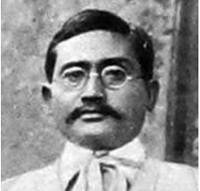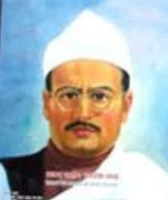History of Nepal- Armed Revolution
Armed Revolution in Nepal (2007 BS)
The year 1903 BS bore a stain in the history of Nepal. Jung Bahadur plotted a massacre in the courtyard of Kot and became the Prime Minister of Nepal in the year. He usurped all the state powers and started despotic rule which continued for 104 years. It was the rule of terror and suppression. But this rule was ultimately overthrown by an armed revolution waged by the Nepali Congress.
The year 2007 BS occupies an important place in the history of Nepal. It was the first armed revolution participated by general Nepali and the king. The revolution aimed at the abolition of the Rana rule and introduction of a democratic rule in Nepal. With the collective efforts and support from India the revolution was successful and the autocratic rulw came to an end for ever and for good.
Causes of the Revolution
Political cause : The rana rule was uncontrolled and tyrannical. The king and the people were completely neglected. The king was put to luxuries to limit the power. The death of Crown prince Mahendra's wife in childbirth due to lack of healthcare increased the royal opposition to the Ranas. Throughout the Rana rule people had no freedom. They had little participation in the high offices. The people who protested were severely punished or executed. So, people's ultimate wrath was natural.
Economic cause : Poverty had seized the country. There was no employment. The farmers' condition was miserable. They were very badly exploited. Maintenance was hard. They were compelled to pay high taxes but the national income was spent solely for the indecent luxuries of the Ranas.
Social cause : The social condition of the country was very bad. Illiteracy, ignorance, superstition and blind traditional customs like casteism, untouchability, child marriage, polygamy, etc. were widespread.
International cause : After World war II, new awareness had drowned in Asia and Africa. Fight for freedom was going on in India. Similarly people's movement was prevailing in China. Many Nepalese participated in India's struggle for freedom. Many countries were getting independence from colonialism. So anti-Ranarchy movement in Nepal was natural.
Organized efforts
Anti-Ranarchy environment was gradually evolving. It needed organized efforts. In spite of arrests, the ardent people were attempting. 'Prachanda Gorkha'(1988 BS), 'Praja Parishad'(1993 BS), 'Nepali National Congress' (2003 BS) were established. The C class Ranas were also being organized under Suvarna Shumsher who led a separate party called the Nepali Democratic Congress. They all had the same purpose-the end of the Rana regime. In these attempts manu lost their lives and many were put to prison. Shukraraj Shastri, Dashrath Chand, Dharmabhakta mathema, and Gangalal shrestha were executed. Despite such suppressive responses, the anti -rana activities continued.
The environment in Kathmandu echoed with the anti -Rana slogans as processions and demonstrations took place in many places. Many people were arrested but the revolution could not be controlled.
At last Mohan shumsher requested the Indian government for arbitration. Through some difficult negotiations, a tripartite agreement between the Ranas, and the Nepali Congress was signed in Delhi on Feb 12, 1951 AD(Falgun1,2007 BS).
It was actively facilitated by the Indian government especially the prime minister, Jawaharlal Nehru. With the conclusion of this agreement Rana rules as well as the armed revolution came to an end. But Dr. K.I. Singh did not accept the agreement and continued the revolution. At last he was knocked down.
The terms of the Delhi compromise were as follows;
International cause : After World war II, new awareness had drowned in Asia and Africa. Fight for freedom was going on in India. Similarly people's movement was prevailing in China. Many Nepalese participated in India's struggle for freedom. Many countries were getting independence from colonialism. So anti-Ranarchy movement in Nepal was natural.
Organized efforts
Anti-Ranarchy environment was gradually evolving. It needed organized efforts. In spite of arrests, the ardent people were attempting. 'Prachanda Gorkha'(1988 BS), 'Praja Parishad'(1993 BS), 'Nepali National Congress' (2003 BS) were established. The C class Ranas were also being organized under Suvarna Shumsher who led a separate party called the Nepali Democratic Congress. They all had the same purpose-the end of the Rana regime. In these attempts manu lost their lives and many were put to prison. Shukraraj Shastri, Dashrath Chand, Dharmabhakta mathema, and Gangalal shrestha were executed. Despite such suppressive responses, the anti -rana activities continued.
At last Mohan shumsher requested the Indian government for arbitration. Through some difficult negotiations, a tripartite agreement between the Ranas, and the Nepali Congress was signed in Delhi on Feb 12, 1951 AD(Falgun1,2007 BS).
It was actively facilitated by the Indian government especially the prime minister, Jawaharlal Nehru. With the conclusion of this agreement Rana rules as well as the armed revolution came to an end. But Dr. K.I. Singh did not accept the agreement and continued the revolution. At last he was knocked down.
The terms of the Delhi compromise were as follows;
- The King would return and be the legitimate monarch again,
- A 10 -member interim cabinet would be appointed, with 5 Ranas and 5 Congressmen,
- Elections to a constituent assembly would held within a year,
- General amnesty (freedom) for political prisoners except those accused of criminal offences,
- Stoppage of the revolution by the revolutionaries giving up their arms
On Feb 15, 1951 AD (falgun 4, 2007 BS) King Tribhuwan returned to Nepal. On Feb 18 ( falgun 7) he announced the end of the Rana rule and the formation of the Rana-Congress coalition government. Nepal was declared a democratic country. The general people welcomed the abolition of the Rana autocracy after 104 years. There were victory celebrations throughout the country. Since then every 7th Falgun has been celebrated as the Democracy Day in Nepal.
Thank you for visiting







